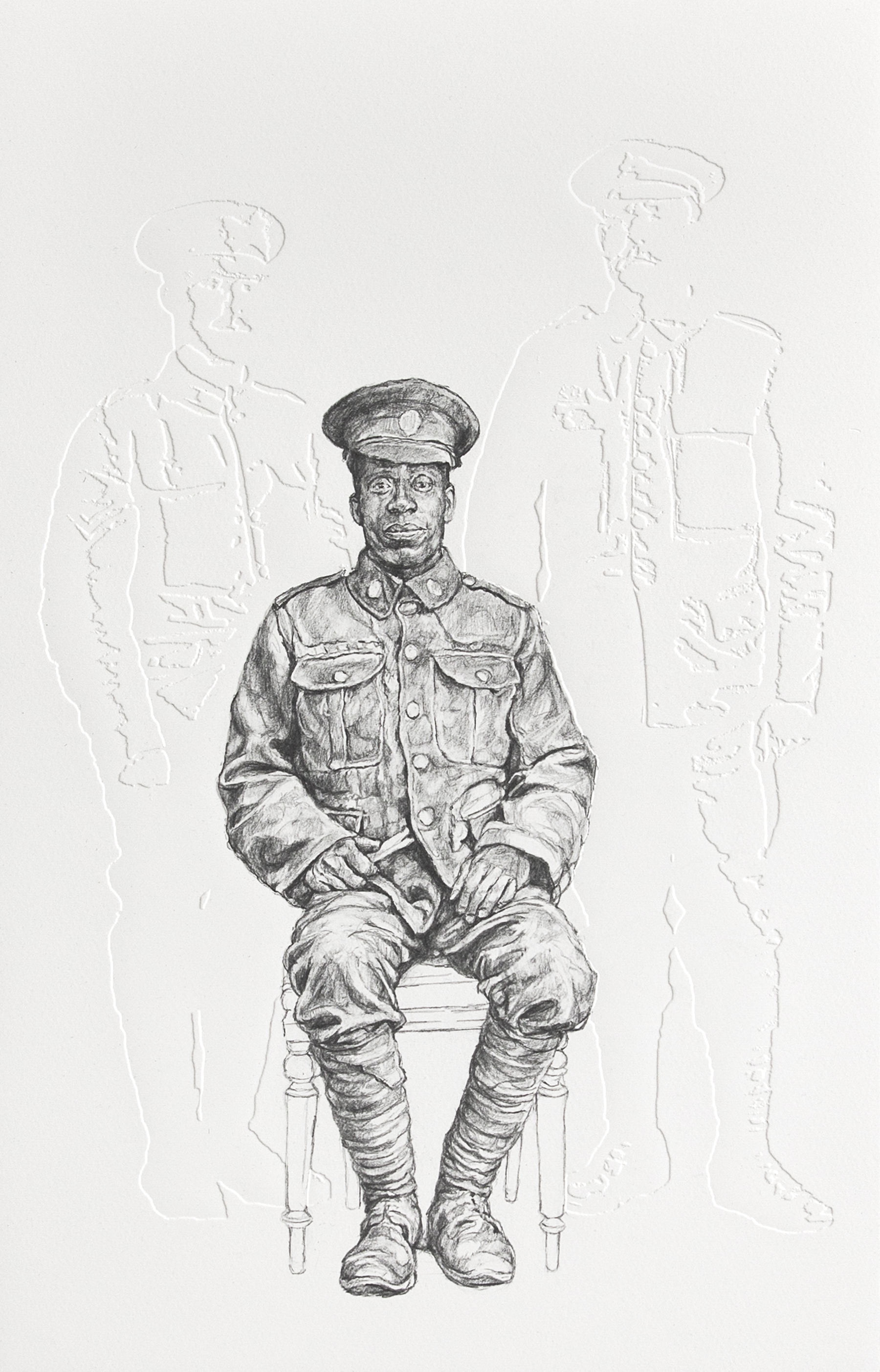Barbara Walker is a figurative artist whose practice focuses on drawing. She makes work that scales from small embossed works on paper to large charcoal wall drawings. Issues of visibility and representation are central to Walker’s practice. She views the archive as a space of power that is used to privilege white western histories and subjects over Black people and culture. Within this unbalanced system, art plays the mediator, supporting or challenging established narratives through acts of representation. As such, her drawings often reference public archives to create works that seek to transfer visibility to Black subjects; ranging in subject matter from the ‘stop and search’ police tactic, European paintings in the National Gallery and the First World War. Through a process of erasing white subjects, and bringing Black men and women to the fore, Walker revisits and reveals the prejudices inherent in how western histories are told by those with power.
The three drawings acquired for the Whitworth are part of an ongoing series called ‘Shock and Awe’ (2015–present). In these works, white soldiers are rendered almost invisible through embossing whilst Black soldiers are brought to the surface with graphite marks. Through this inversion, these portraits reclaim an equal and independent position of the former ‘other’, establishing their own narratives rather than those told by their former oppressors.
The narrative of national heritage presented through public collections is informed and shaped by museum acquisitions. Within the Whitworth’s collection, Barbara Walker’s striking drawings will be used as a tool for disrupting the traditional narrative of British history.


